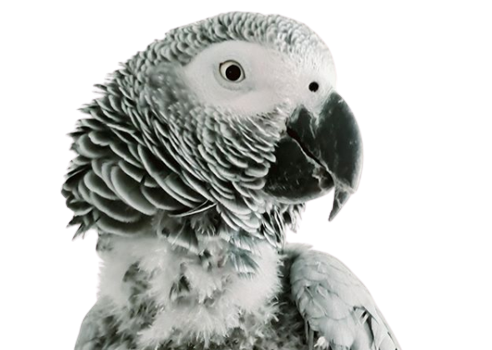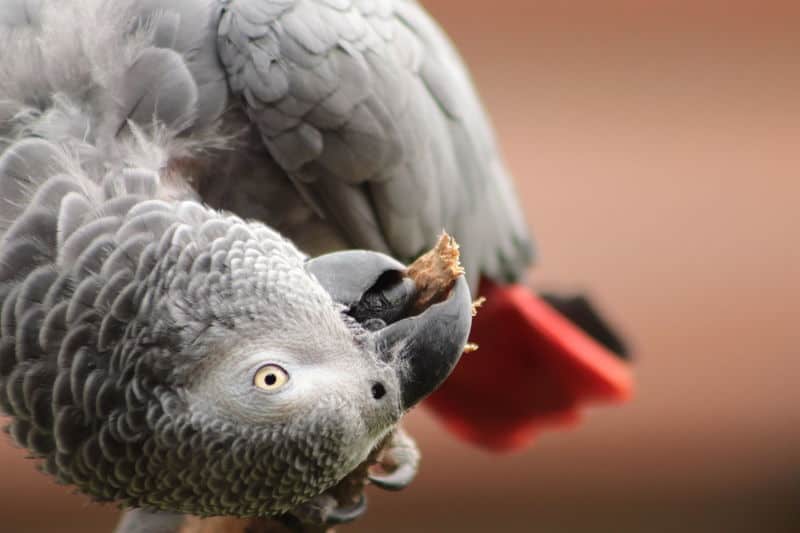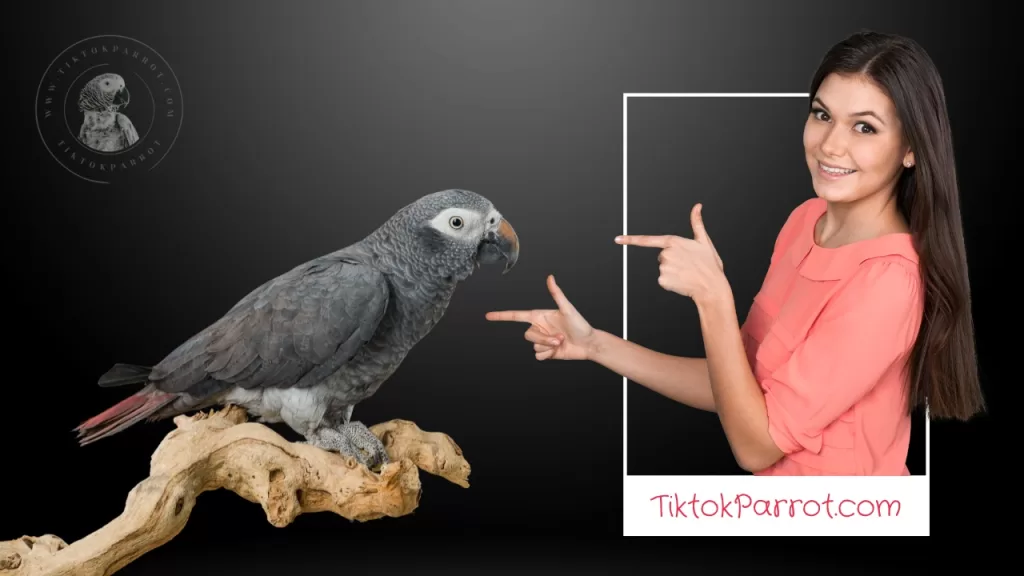In this blog post, we’ll take you on a journey to explore the evolution of African Grey Parrot plumage, uncovering the secrets behind their distinctive appearance and the role it plays in their natural habitat.
If you’ve ever had the pleasure of encountering an African Grey Parrot, you’d know that their exquisite plumage is nothing short of a work of art. These avian creatures possess an incredible blend of beauty and intelligence that has fascinated bird enthusiasts and researchers alike. In this article, we will delve into the captivating world of African Grey Parrot plumage, exploring how it intertwines with both aesthetics and evolution.
Discover the Mesmerizing World of African Grey Parrot Plumage: Aesthetic Evolution, Camouflage Strategies, Communication Colors & More! Dive into the Artistry of Nature.
Introduction
The African Grey Parrot (Psittacus erithacus) stands as one of the most renowned parrot species in the world, admired not only for its exceptional mimicry and intelligence but also for its mesmerizing plumage.
African Grey Parrots, with their stunning plumage, are not just birds; they are true works of art in the avian world. The intricate patterns and colors of their feathers have fascinated researchers and bird enthusiasts for centuries.
Below we will take a closer look at the captivating plumage of African Grey Parrots, discussing how their distinctive coloration and patterns may have evolved and the role their appearance plays in their natural environment.
The Origins of Color
The evolution of African Grey Parrot plumage is a story of adaptation to their environment. Their predominantly grey color serves as effective camouflage in the dense rainforests they inhabit. The shades of grey help them blend seamlessly into the dappled sunlight and shadows, providing protection from predators and increasing their chances of survival.
The Evolutionary Significance
The evolution of the African Grey Parrot’s plumage is a testament to the marvels of adaptation. Over countless generations, the plumage has adapted to fulfill various functions, from communication to camouflage.
The Magnificence of African Grey Plumage
Adorning themselves with predominantly gray feathers, African Grey Parrots exhibit subtle variations in color, ranging from light silver to charcoal. The contrasting shades create a captivating visual effect, especially when coupled with their crimson tail feathers and strikingly pale, intelligent eyes.
Patterns of Perfection
Beyond their neutral tones, African Grey Parrots boast striking patterns that vary across species. Some display delicate scalloping, while others feature bold streaks. These patterns serve multiple purposes, from assisting in thermal regulation to aiding in identification within their social groups. Researchers speculate that these patterns might also play a role in mate selection, signaling health and genetic fitness.
Variation in Plumage
Across the different subspecies of African Grey Parrots, distinct plumage characteristics can be observed. The Timneh African Grey, for instance, features a darker and richer charcoal-colored plumage compared to its Congo African Grey counterpart.
Intricacies of Iridescence
Many African Grey Parrot species possess iridescent patches on their plumage, shimmering with hues of blue, green, or even red. This phenomenon, caused by structural coloration rather than pigments, adds an ethereal quality to their appearance. These iridescent patches are thought to have evolved as signals of good health and vitality, especially during courtship displays.
Camouflage and Survival
In the dense forests of their native West and Central Africa, the gray plumage acts as effective camouflage, allowing them to blend seamlessly with the misty, dappled sunlight and shadows.
African Grey parrots’ remarkable plumage serves as a crucial element of their survival strategy through effective camouflage. Their predominantly grey coloration blends seamlessly with the dappled light and shadows of the rainforest canopy they inhabit.
This cryptic coloration offers protection from predators by making them difficult to detect among the dense foliage. Additionally, their subdued tones allow them to avoid drawing attention to themselves while foraging for food.
This adaptive coloration not only helps African Grey parrots evade predators but also allows them to move discreetly within their environment. Through the evolution of their camouflage, these parrots have mastered the art of blending in, demonstrating the intricate interplay between nature and survival strategies.
Communication Through Colors
The African Grey Parrot’s appearance is not just a testament to nature’s aesthetic prowess; it’s also a powerful means of communication. Their plumage can convey a range of emotions, from excitement to fear, and even dominance. During interactions within their flocks, these parrots use their visual signals to maintain social harmony and establish hierarchies.
While predominantly gray, these parrots have vibrant red tail feathers that serve as a visual marker during flight, facilitating group cohesion and communication within the flock.
Molting: A Natural Renewal
Molting, the cyclical shedding and regrowth of feathers, is not only crucial for maintaining plumage health but also for the parrot’s overall vitality. The process ensures that their feathers remain efficient for flight and insulation.
Molting is a natural and essential process for African Grey parrots, representing a period of renewal in their lifecycle. During molting, these birds shed old feathers and grow new ones, enabling them to maintain the health and functionality of their plumage. Molting typically occurs annually, and the timing can be influenced by factors like changes in daylight hours and hormonal shifts.
This process is energy-intensive, and parrots may appear slightly less active or exhibit minor changes in behavior during this time. Adequate nutrition, including a balanced diet rich in vitamins and minerals, is crucial to support the feather growth process.
Observing molting patterns can provide insights into a parrot’s overall health, and ensuring a stress-free environment during this phase is important for their well-being. Understanding and accommodating molting as a natural part of an African Grey parrot’s life contributes to their optimal feather health and vitality.
Human Interaction and Plumage Preservation
The beauty of African Grey plumage has made them sought-after companions. However, the pet trade raises ethical questions about conservation and the preservation of their natural habitat.
Human interaction with African Grey parrots plays a crucial role in plumage preservation and the well-being of these birds. Positive social interactions and enrichment activities contribute to the maintenance of their vibrant plumage.
Regular handling and gentle petting simulate the natural grooming behaviors that parrots engage in with flock members. This not only strengthens the bond between humans and parrots but also promotes proper feather health by distributing natural oils and preventing matting. On the other hand, excessive handling, stress, or improper care practices can lead to feather plucking or damage.
Creating a stimulating environment with toys, foraging activities, and opportunities for flight exercises also supports plumage preservation. In essence, understanding the delicate balance between human interaction and respecting the parrot’s natural behaviors is pivotal in ensuring the long-term health and beauty of African Grey parrot plumage.
Feather Health
A parrot’s feathers can provide insights into its overall health. Dull or disheveled plumage might signal underlying health issues, highlighting the importance of attentive care.
The health of African Grey parrot feathers serves as a reflection of their overall well-being. These birds’ feathers are not only aesthetically pleasing but also play a vital role in their health and behavior.
A glossy and vibrant plumage often indicates a parrot in good health, receiving proper nutrition and care. Conversely, changes in feather condition, such as dullness or feather plucking, can signal underlying health issues, stress, or inadequate living conditions.
Regular grooming and preening are essential for maintaining feather health, as this helps distribute natural oils and removes dirt. Additionally, observing the quality of their feathers can offer insights into their emotional state and whether they are thriving physically and mentally. Monitoring and promoting feather health is a key aspect of ensuring the overall well-being of African Grey parrots in captivity.
Conservation Efforts and Habitat Protection
As their natural habitat faces deforestation and degradation, conservationists are working tirelessly to protect these parrots and their intricate plumage by preserving the ecosystems they rely on.
Understanding the evolution and aesthetics of African Grey Parrot plumage holds significance for their conservation. As their natural habitats face threats from deforestation and illegal trade, appreciating the role of their appearance in survival can contribute to the development of effective conservation strategies.
Breeding and Plumage Traits
Selective breeding has led to various color mutations in captivity, further emphasizing the plumage’s role in aesthetics and human fascination.
Breeding African Grey parrots is a fascinating endeavor that unveils the intricate world of their plumage traits. These parrots, known for their striking appearance, display a range of plumage colors and patterns across different species.
During the breeding season, the vividness of their plumage often intensifies as a part of courtship displays. The diverse palette of colors and patterns serves as a form of communication, helping individuals convey their health, vitality, and genetic fitness to potential mates.
Understanding these plumage traits is essential for successful breeding programs, as it allows breeders to select pairs with compatible genetic markers, ensuring the propagation of healthy offspring.
Breeding African Grey parrots not only contributes to the preservation of these remarkable species but also offers a unique opportunity to witness the dynamic interplay of genetics and aesthetics in the avian world.
Cultural and Symbolic Representations
Throughout history, African Grey Parrots have held cultural and symbolic significance in different societies, representing wisdom, communication, and companionship.
Grey parrots hold significant cultural and symbolic representations across various societies. In some African cultures, these intelligent and eloquent birds are revered as symbols of wisdom, communication, and even divination. Their mimicry skills have led them to be seen as intermediaries between humans and the spirit world.
Additionally, African Grey parrots have appeared in folklore and stories, embodying themes of transformation, knowledge, and companionship. Beyond their cultural significance, these parrots have also gained popularity as pets due to their ability to mimic human speech and their endearing personalities. Their presence in literature, art, and even religious contexts further emphasizes their enduring impact on human culture and imagination.
The Role of Plumage in Cognitive Enrichment
The complexity of their plumage can also contribute to cognitive enrichment, stimulating problem-solving skills and mental engagement in captivity.
The role of plumage in African Grey parrots goes beyond aesthetics; it plays a pivotal role in their cognitive enrichment. These remarkable birds possess exceptional intelligence and are known for their advanced problem-solving abilities. Their intricate plumage patterns and colors are not only visually stimulating but also contribute to cognitive stimulation.
Parrots engage in activities like preening, which involves exploring and interacting with their own feathers. This tactile engagement with their plumage fosters mental engagement, enhancing their cognitive development.
Furthermore, their ability to recognize and respond to different patterns and colors in their own plumage and that of others contributes to their social interactions and understanding of their environment. Thus, the interplay between their plumage and cognitive enrichment showcases the multifaceted nature of African Grey parrots’ brilliance.
Ethical Considerations in the Pet Trade
The demand for African Grey Parrots in the pet trade raises ethical concerns, prompting discussions about responsible ownership, conservation, and the impact on wild populations.
Ethical considerations surrounding African Grey parrots in the pet trade highlight important concerns about their well-being and conservation. These intelligent and charismatic birds have faced challenges due to their popularity as pets.
The pet trade, if not regulated properly, can lead to habitat destruction, illegal trafficking, and negative impacts on wild populations. Ethical considerations emphasize the importance of obtaining African Grey parrots from reputable breeders or adopting from rescue organizations. Potential pet owners should be well-informed about the care requirements of these birds, which demand a high level of commitment and attention.
Conservation efforts also play a crucial role in ensuring the survival of these species in their natural habitats. By addressing ethical considerations, we contribute to the welfare of African Grey parrots and support sustainable practices that benefit both the species and the environment.
Appreciating the Avian Artistry
We can say the African Grey Parrot’s plumage is a masterpiece of nature, blending aesthetics and evolution in a way that continues to captivate our admiration. As we appreciate their beauty, let us also embrace the responsibility of preserving their natural habitats and the intricate artistry that has evolved over millennia.
My Final Thoughts
The plumage of African Grey Parrots is more than a visual delight; it’s a canvas that tells the story of their evolution, adaptation, and communication. Each feather is a brushstroke in the masterpiece of their existence, blending artistry with science in the grand gallery of nature.
As we continue to study and appreciate these feathered artists, as I mentioned above let us also strive to protect their habitats and ensure their continued presence in the vibrant tapestry of our planet’s biodiversity.
FAQs
- Can African Grey Parrots mimic human speech?
Yes, African Grey Parrots are renowned for their exceptional ability to mimic human speech and various sounds. - Why do African Grey Parrots have red tail feathers?
The red tail feathers serve as a visual means of communication and cohesion within their flock. - Are African Grey Parrots endangered?
Yes, due to habitat loss and the pet trade, some subspecies of African Grey Parrots are classified as endangered. - Do African Grey Parrots require special care in captivity?
Yes, African Grey Parrots are intelligent and social birds, requiring mental stimulation and social interaction to thrive in captivity. - How can I contribute to African Grey Parrot conservation?
Supporting conservation organizations, raising awareness, and avoiding the purchase of wild-caught parrots are some ways to help protect these magnificent birds. - How do African Grey Parrots groom their plumage?
African Grey Parrots meticulously groom themselves using their beaks to maintain the cleanliness and functionality of their feathers. - Can African Grey Parrots change the color of their plumage?
No, the color of their plumage is determined by genetics and cannot change. However, variations in lighting can sometimes create the illusion of color shifts. - What role does sunlight play in maintaining their plumage health?
Sunlight helps African Grey Parrots synthesize vitamin D, which is essential for maintaining healthy feathers and overall well-being. - Do African Grey Parrots use their plumage for courtship displays?
Yes, during courtship, they may display their plumage to attract a mate. Vibrant and healthy feathers can signal their fitness. - Why do African Grey Parrots pluck their own feathers?
Feather plucking can be a sign of stress, boredom, or health issues in captivity. Addressing the underlying cause is crucial to prevent this behavior. - Are there any superstitions associated with African Grey Parrot feathers?
In some cultures, African Grey Parrot feathers are believed to bring luck and protection, adding to their symbolic value. - How often do African Grey Parrots molt?
Molting typically occurs annually, and it’s a process of shedding old feathers and growing new ones. - What factors affect the vibrancy of their plumage?
A balanced diet rich in essential nutrients, proper hydration, and exposure to natural light contribute to vibrant and healthy plumage. - Can the color of their plumage change with age?
Yes, as African Grey Parrots age, their plumage might exhibit subtle changes in color due to wear and tear. - Do African Grey Parrots use their plumage for thermoregulation?
Yes, their plumage helps regulate body temperature by trapping air close to their skin and providing insulation. - Why are African Grey Parrots considered intelligent?
African Grey Parrots are known for their advanced problem-solving abilities, complex communication skills, and the capacity to learn various tasks. - Can diet impact the quality of their plumage?
Absolutely, a well-balanced diet rich in vitamins, minerals, and proteins is essential for maintaining healthy and vibrant plumage. - What are the most distinctive markings on their plumage?
African Grey Parrots often have unique patterns around their eyes and cheeks, resembling intricate lacework. - Do African Grey Parrots use their plumage to communicate with other species?
While they primarily use vocalizations to communicate, their colorful plumage can also play a role in signaling intentions to other birds. - Why is the African Grey Parrot’s plumage considered adaptive?
Their gray coloration serves as effective camouflage in the dense forests, helping them blend into their environment and evade predators. - Can African Grey Parrots hybridize with other parrot species?
While it’s rare, African Grey Parrots can hybridize with other closely related parrot species, resulting in unique plumage combinations. - Are there any cultural taboos associated with African Grey Parrot feathers?
In certain cultures, using their feathers for decoration or rituals might be considered disrespectful due to their symbolic value. - How do African Grey Parrots benefit from their red tail feathers?
The red tail feathers serve as a focal point during flight, aiding in navigation and flock coordination. - Can the health of their plumage indicate breeding readiness?
Yes, a parrot with healthy plumage is more likely to be in optimal breeding condition, which can be indicated by bright and well-groomed feathers. - Why should prospective African Grey Parrot owners research plumage care?
Understanding proper plumage care is crucial for ensuring the bird’s well-being, preventing feather-related issues, and fostering a strong bond between the parrot and its owner.
If you found this blog helpful, It would be great if you could share it with your family and friends who might find it useful as well.
You might like to read these as well 🙂
Why African Grey Parrots Pluck Feathers
Shaking Your Tailfeathers: An African Grey Self Harming
The Mesmerizing feather of African Grey Parrots: A Visual Delight for Bird Lovers
Understanding of Grey Parrot’s Body Language
African Grey Parrot Male or Female? (Determine Gender of African Grey)
Is Your African Grey a Jealous Bird? Here’s What You Need to Know!
African Grey Parrots: The Ultimate Guide to Care and Training
Unlock the Secrets of Choosing the Perfect African Grey Parrot
The Importance of a Cage for Your African Grey Parrot
For more useful content about African grey parrots, you can subscribe my site with your email to get notification upon publishing a new blog, the subscribe box you can see on the right side of this page. Also if you get an alert on your web browser while browsing my site, allow it and that will also give you an alert whenever I publish a new blog. 🙂
Stay safe and much love !




